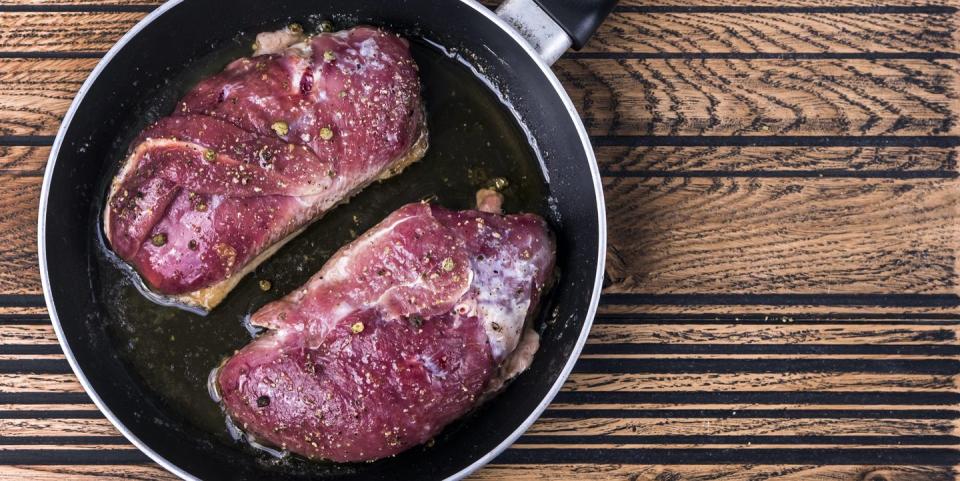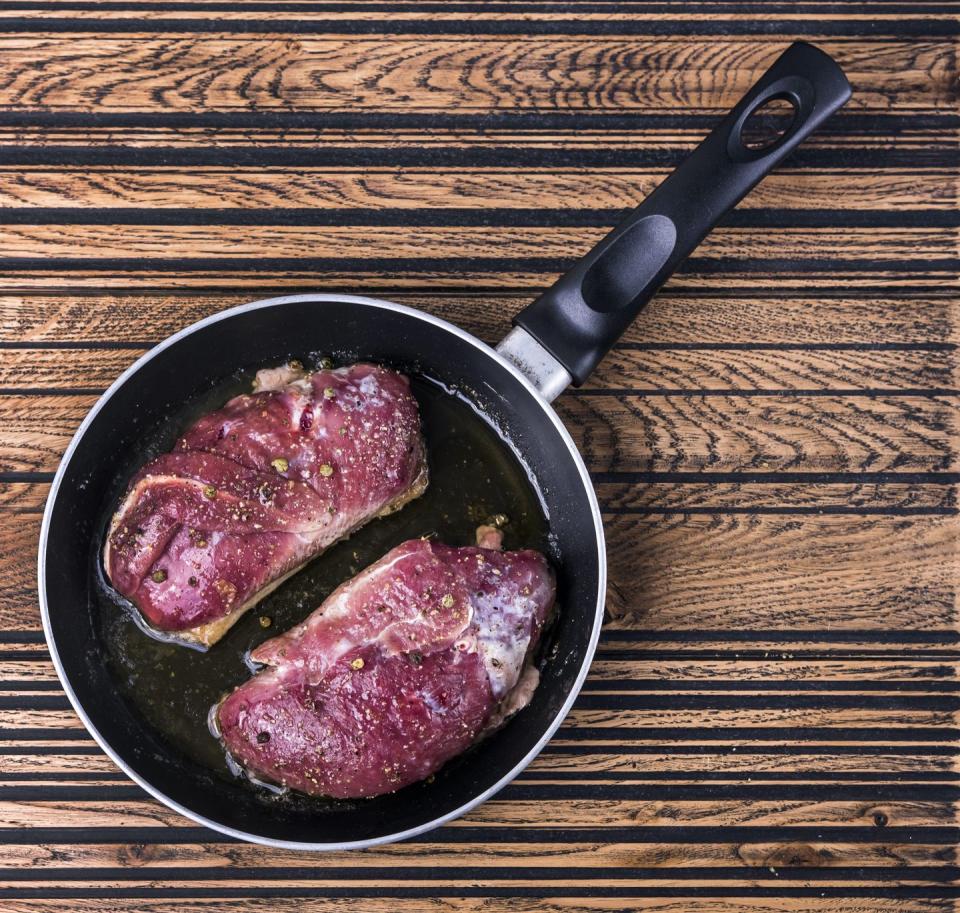Here's How To Cook Duck Breast Like A Pro

Rich, tender and almost gamey, duck breast is a powerhouse of flavour thanks to the characterful layer of fat that lies under its skin. This fatty layer lends duck breast a juicy gusto that’s more readily associated with red meat. Duck breast is prepared a little differently to chicken breast but if you stick to a couple of culinary rules, you’ll master it in no time. Here’s the lowdown on how to cook it:
Score the skin
Score the fat on your duck breast with a sharp knife, making sure not to cut into the meat itself. The cuts maximise the amount of the duck’s surface area exposed to the pan, encouraging the fat to render out (or melt) more quickly. This technique also helps duck breast to sit better in the pan without warping.
Season
Season your duck breast with salt and pepper or marinade it with a dry rub to inject more flavour. You won’t need to add any butter or oil to your seasonings as there’s plenty of natural fat in the duck already that will seep out as it cooks.
Start with a cold pan
The traditional way of searing – do it hot and do it fast – doesn’t work as well with duck breast. Instead, lay your duck breast skin side down in a cold pan without any oil or butter before gradually turning the heat up. This method gives the fat a better chance to melt; the aim of the game is to slowly release it without overcooking the centre of the breast, so you’re left with a deliciously crispy skin and tender middle at the end.

Let it rest
Allow your duck breast to rest (for about 10 minutes) just as you would with a steak or roast joint. This resting period allows the juices in the breast to evenly redistribute themselves, leading to a succulent texture.
How to use seared duck breast in recipes
Seared slices of duck are delicious topped on salads or simply dipped into sour plum sauce. Why not glaze your rested duck breast with a sticky five spice, honey and soy marinade or brush over some shop-bought Hoisin sauce before serving with noodles? Another idea is to add slices of duck breast to Thai red curry or Penang curry just before serving to gently warm it through without the risk of overcooking.
Pre-heat oven to 220ºC (200ºC Fan). Score the skin of the duck breast with a sharp knife and season generously with salt and pepper.
Place the breast skin-side in a cold, non-stick, oven-friendly frying pan gradually turning the heat up. The fat from the duck should begin to melt. Cook for about 8-10 minutes, until the skin has turned golden brown.
At this point you can turn the breast over and fry until done to your liking, alternatively you can place the entire pan in the oven – just be sure to remove the fat from the pan first.
Aim for a medium-rare, juicy texture. If it feels firm but springs back when you press it with your finger, it will likely be at the perfect sweet spot. Cook it a little longer for medium.

